 Esperanto
Esperanto
 Shqiptare
Shqiptare
 Euskara
Euskara
 Zulu
Zulu
 Latinus
Latinus
 Cymraeg
Cymraeg
 தமிழ்
தமிழ்
 Slovak
Slovak
 Slovak
Slovak
 Afrikaans
Afrikaans
News Center
Introduction to the electrical data interface of industrial cameras in machine vision
Publish:
2022-08-29 16:10
Source:
www.premier-cable.net
Introduction to the electrical data interface of industrial cameras in machine vision
When it comes to the interface of industrial cameras, there are mainly two types, namely the lens interface and the electrical data interface.
The data interface of industrial cameras can be divided into two types : digital interface and analog interface.
The data interface transmits digital signals, and the analog interface transmits analog signals.
Digital signals have many advantages over analog signals, such as strong anti-interference ability, easy encryption, and convenient subsequent processing.
Therefore, today's high-end industrial cameras basically use digital interfaces. And low-end monitoring equipment based on cost and cost-effective reasons, basically use the analog interface.
Common electrical digital interfaces for industrial cameras include : USB interface, IEEE1394 interface, CoaXPress interface, GIGE interface, Camera Link interface, and special interface.
1. USB interface :
The USB2.0 interface was released in 2000 and is one of the earliest digital interfaces. The transmission speed is 480Mbps, the communication distance is 5m, and 80% of the bandwidth is used for image transmission. The industrial camera with USB2.0 interface is a relatively common type on the market, and many manufacturers produce cameras with this interface. The advantage is that all computers are equipped with a USB2.0 interface, which is convenient for connection, no capture card is required, and the camera can be powered by a USB cable; The standard protocol, the master-slave structure leads to high CPU usage, and the bandwidth cannot be guaranteed. The longest transmission distance of a single root is 5m, and the relay can reach 30 meters. The transmission distance is short, and the signal attenuation is relatively serious.
The USB3.0 interface was released in 2008, with a transmission speed of 4.8Gbps, a communication distance of 10m, and 80% of the bandwidth used for image transmission. The design of USB 3.0 adds two sets of data buses on the basis of USB 2.0. In order to ensure backward compatibility, USB 3.0 retains a set of transmission buses of USB 2.0. The problem of slow transmission speed is solved, but the transmission distance is still relatively close. In terms of transmission protocol, in addition to supporting the traditional BOT protocol, USB 3.0 also adds the USB Attached SCSI Protocol (USAP), which can fully take advantage of the high-speed bandwidth of 5Gbps. At the same time, the full-duplex transmission method is adopted to support simultaneous bidirectional data transmission; the host-led asynchronous transmission flow control enables the device to notify the host when data transmission is ready; outstanding real-time compatibility and high reliability.
2. IEEE1394 interface :
The 1394 interface is also called the FireWire interface, which is what we often call the FireWire interface. The 1394 interface is mainly divided into a 1394A interface with a rate of 400Mb and a 1394B interface with a rate of 800Mb. The 1394A interface was released in 1995, with a transmission speed of 400Mbps and a communication distance of 4.5m. Mainly used in the field of video transmission. The 1394B interface was released in 2002, with a transmission speed of 800Mbps and a communication distance of 4.5m. Mainly used in the field of video transmission.
The 1394 interface is still widely used in the industrial field. The protocol and encoding method are very good, and the transmission speed is relatively stable, but due to the monopoly of Apple in the early days, it has not been widely used. 1394A single 4.5m (S400), plus repeater up to 70m, if adjusted to S100 or S200, the transmission distance can reach 25m, or even longer. 1394B single 10m (S800), transfer to network transmission, can reach 100m (S100) with Cat5 cable; use Cat6 cable, up to 60m in the case of S400; transfer to optical fiber transmission, up to 500m (S400/S800).
The characteristics of the 1394 interface support hot swapping, point-to-point communication, standard DCAM protocol, low CPU usage, and can be powered through the 1394 bus. However, since the early 1394 interface has not been well popularized, there is no corresponding interface on the existing PC side. If you want to connect the corresponding camera, you need to cooperate with the 1394 interface capture card. At present, the 1394 interface has been gradually eliminated by the market.
3. CoaXPress CXP interface :
The CoaXPress interface was released in 2008 and was originally launched by a number of companies in the field of industrial image processing to develop a fast data interface to support high-speed imaging applications and enable longer-distance transmission of large amounts of data . CXP1.0 was officially released in 2011 as a new interface standard. Since then, this standard has found its place in the field of industrial image processing. Later, it was further developed and became CoaXPress 2.0
The interface using CoaXPress1.0/1.1 standard uses 75ohm coaxial cable, the maximum data transmission speed of each channel can reach 6.25Gbit/s, and can support faster data transmission speed through multiple channels at the same time. And CoaXPress2.0 standard transmission speed is twice as fast as it, up to 12.5Gbps. Compared to other efficient standards, CoaXPress 2.0 is superior in resolution and frame rate. A CXP cable can provide up to 13W of power, requiring both the "device" and the "host" to support the GenICam camera programming interface. Although single-channel coaxial cables are affordable, the cost will increase significantly if you want to set up a multi-channel cable assembly and frame grabber.
4. Gige Gigabit Ethernet interface :
Created and promoted by AIA (Automat de Imaging Association); it is a camera interface standard developed based on Gigabit Ethernet communication protocol. Ideal for industrial imaging applications to transmit uncompressed video signals over a network. The first standard to transmit images over long distances using inexpensive cables. Even hardware and software from different manufacturers, as long as they comply with the GigEVision standard, can also achieve seamless Gigabit Ethernet connections.
Industrial cameras with Gigabit Ethernet interface are currently the most popular camera interface due to the stable GigE Gigabit Ethernet protocol. GigE provides a maximum image data bandwidth of 1Gbit/s. Combining simplicity, speed, cables up to 100m and the ability to power the camera over a single cable, it is a popular camera interface. Ethernet cables provide a solid shield. Therefore, it is very suitable for environments with large electromagnetic interference due to the powerful motors of some robots and metering equipment. The FLIRGigE camera also has a packet retransmission function to further enhance transmission reliability.
Unlike USB, GigE does not support DMA. Packets containing image data are transmitted to the host, where they are reassembled into image frames before being copied to software accessible memory.
Some industrial camera manufacturers use the M12X-coded 8-pin connector interface to provide enhanced shielding while improving the water resistance of the device. The M12X-coded8P connector replaces the traditional GJ45 interface of Gige on high-end industrial cameras, increasing the bandwidth of Gige to 10Gbit/s. GigE-based advantages are enhanced. The 10GigE is ideal for high-resolution 3D scanning, volume capture and precision metrology. There are various combinations of GigE and 10GigE. Multiple GigE cameras can be connected to a 10GigE switch, so that a single 10GigE port on the host system can run multiple GigE cameras at full speed. Since CAT5e cables can only run 10GigE cameras within a distance of 30m, it is recommended to use a general-purpose Ethernet cable (CAT-6) and a standard M12X-coded 8-pin connector. At present, the M12X-coded 8P interface of 10GigE has gradually become the mainstream interface for fast connection.
5. Camera Link interface :
The CameraLink standard is a digital image signal communication interface protocol introduced by the International Automated Imaging Association (Automated Imaging Association, referred to as AIA) in 2000.
It is a serial communication protocol. Adopt LVDS interface standard, with fast speed, strong anti-interference ability and low power consumption. It is developed on the basis of the interface protocol ChannelLink of NSM (National Semiconductor). On the basis of Channel link technology, some transmission control signals are added, and some related transmission standards are defined.
The protocol adopts MDR-26-pin connector or SDR-26-pin connector, which has the characteristics of high speed, bandwidth up to 6400Mbps, strong anti-interference ability and low power consumption. Some of these versions require two transmission cables. The three main configurations available are: Basic (2.04Gbit/s), Mid-Range (5.44Gbit/s) and Advanced/Extended (6.8Gbit/s).
The base standard uses an MDR ("MiniDRibbon") 26-pin connector, and the mid-range/full configuration uses two cables, doubling the capacity.
The advanced/extended version exceeds the limits specified by CameraLink and can carry data transmissions up to 6.8Gbit/s.
Both CameraLink and CXP interfaces also require a frame grabber, and additionally require compatibility with the CameraLink power supply mode (PoweroverCameraLink, referred to as PoCL) standard for power supply.
CameraLink lacks error correction or retransmission and requires expensive and cumbersome cabling to improve signal integrity and avoid image loss.
CameraLink uses 28-bit ChannelLink chip; 4 data streams and 1 clock signal are transmitted through 5 groups of LVDS line pairs; 24-bit image data and 4-bit synchronous video signals are transmitted, including: FrameValid, LineValid, DataValid, Spare.
The CameraLink interface is roughly divided into three structural configurations, namely the Base interface, the Medium interface and the Full interface.
Base interface: The number of ChannelLink chips is 1, the number of cables is 1, and the data bandwidth is 2.04Gbit/s (255MB/s)
Medium interface: The number of ChannelLink chips is 2, the number of cables is 2, and the data bandwidth is 4.08Gbit/s (510MB/s)
Full interface: The number of ChannelLink chips is 3, the number of cables is 2, and the data bandwidth is 5.44Gbit/s (680MB/s).
Cameras with the Camera Link interface are rarely used in practical applications. However, its transmission speed is the fastest bus type in current industrial cameras.
Generally used for high-resolution high-speed area scan cameras, or line scan cameras.
6. Special interface :
Some manufacturers use special interfaces/connectors in order to pursue product differentiation or product use environment.
The common special interfaces (power interface or I/O interface) on industrial cameras are Hirose connectors, with 6-pin (HR10A-7P-6S) and 12-pin (HR10A-10P-12S), generally for Gige industrial cameras are used as external power supply and control.
There are also M12 D-coded buckle/coding 4-pin connectors used on 3D smart cameras as I/O interfaces, and M12A-coded buckle/coding/coding 8-pin, 12-pin connectors used on smart industrial cameras as power interfaces , 17-pin connector.
There are also some less common interfaces such as Lemo's push-pull self-locking connector and HDMI, VGA, RS232 and other interfaces.
Machine vision camera link cable
M12 Machine vision camera link cable
IEEE1394 Machine vision camera link cable
Machine vision Gige industrial camera Cable
HR10A-7P-6S Machine vision camera link cable
CoaXPress CXP Machine vision camera link cable
Tel : 0086-0139-2949-7934
Skype : james198585
Email : James@premier-cable.net
Email : sales@premier-cable-mfg.com
Website : www.premier-cable.net
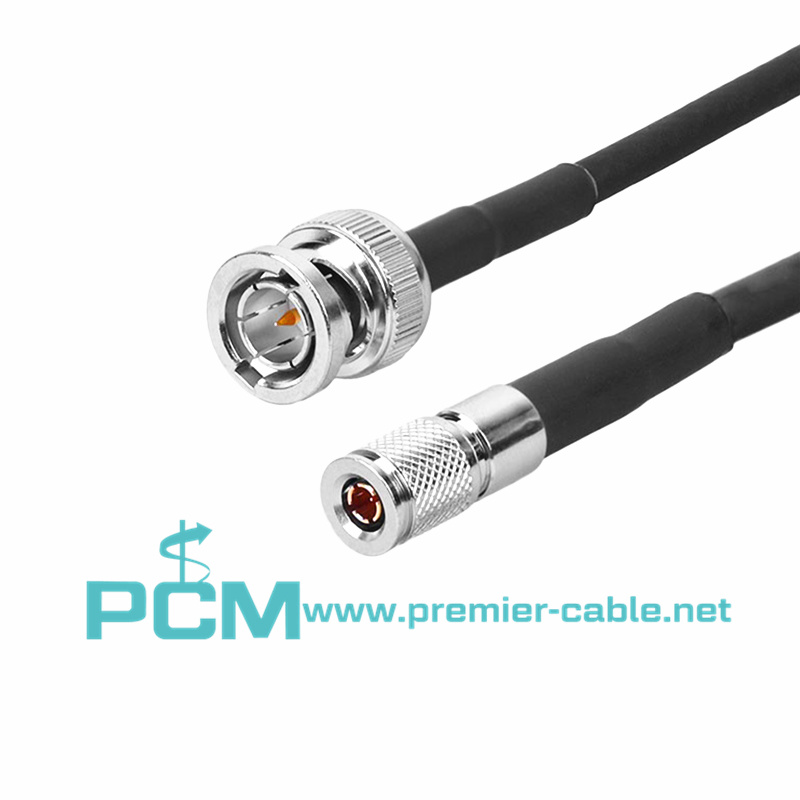
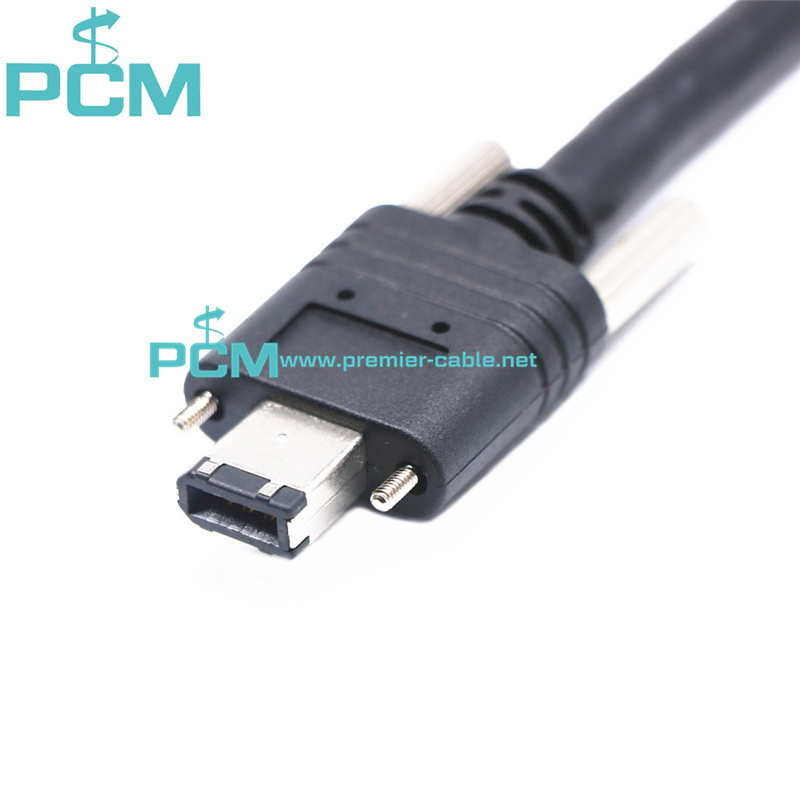
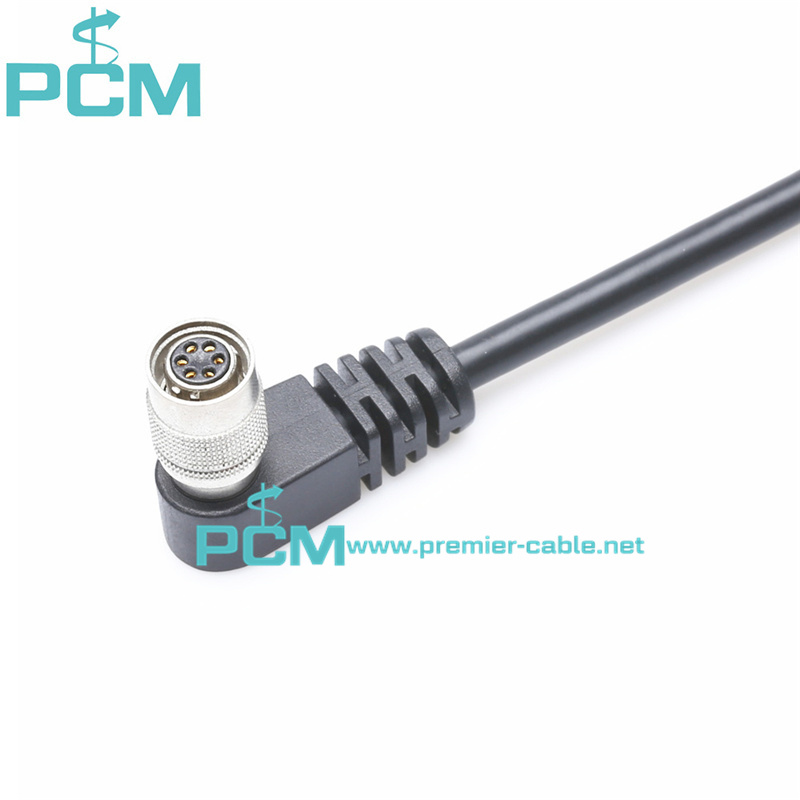
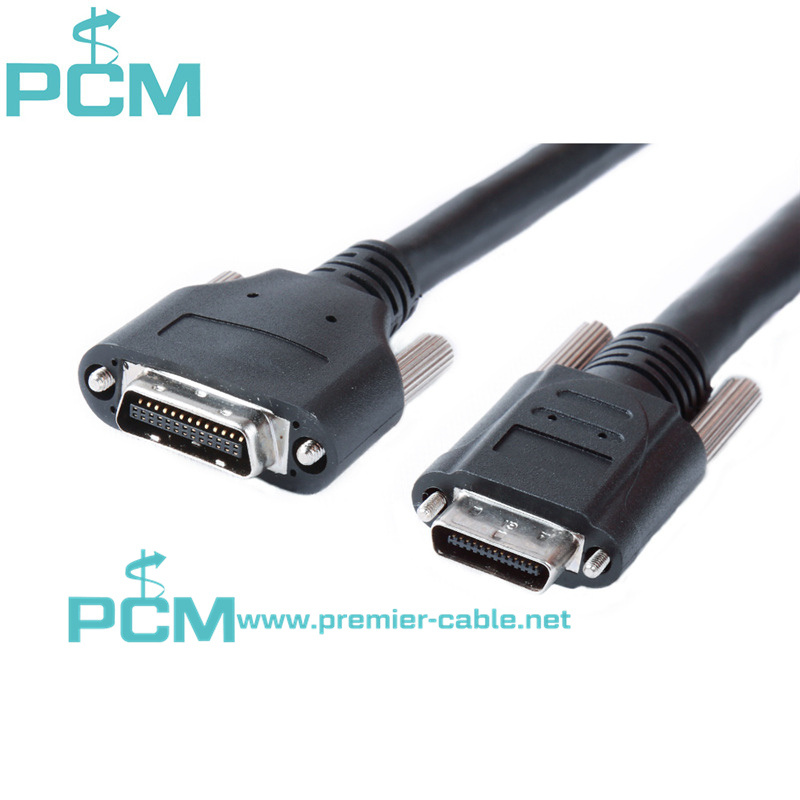
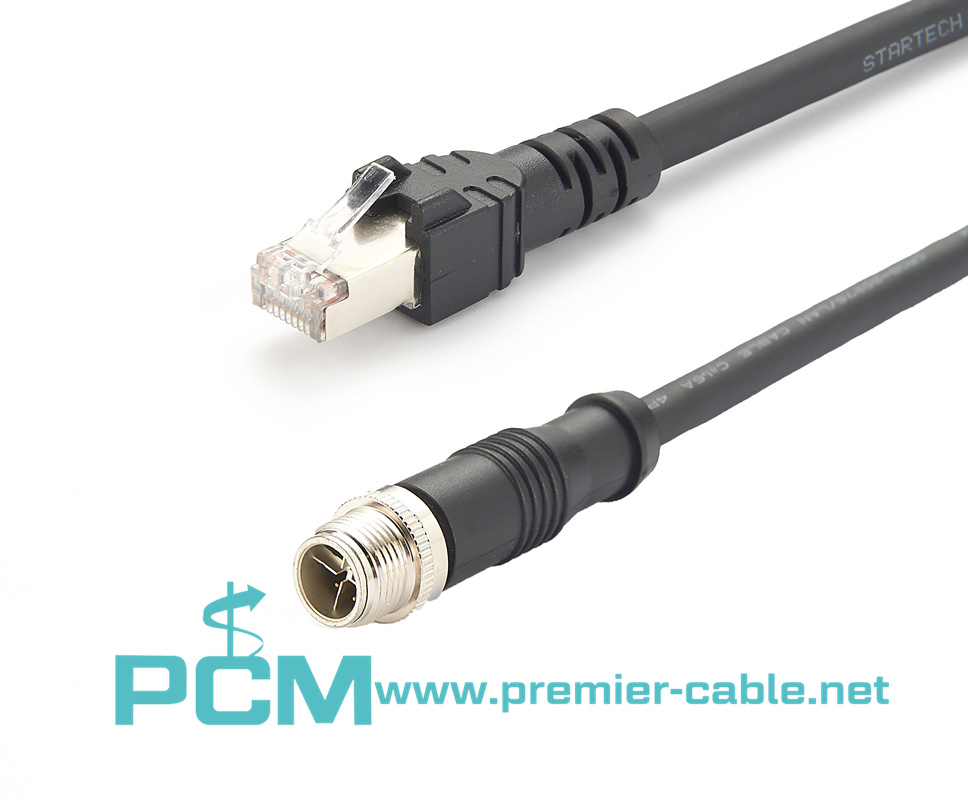
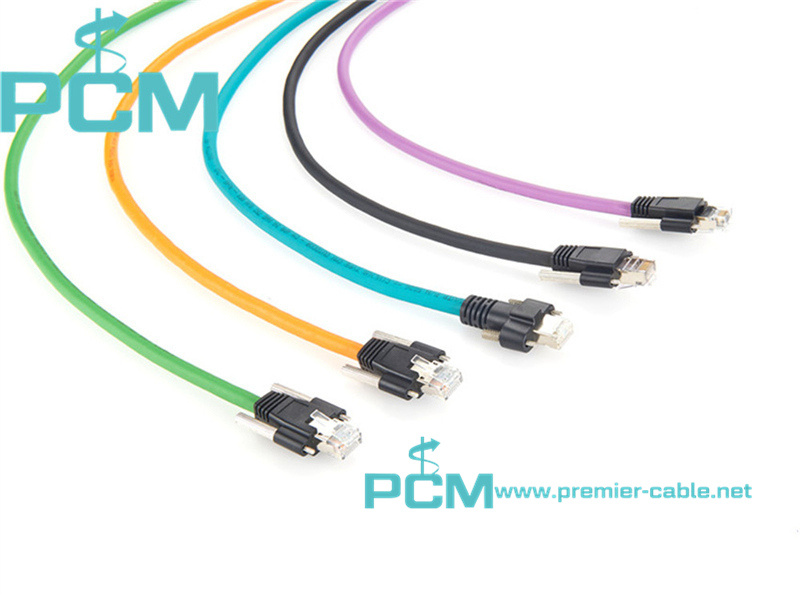
Related News
What is a terminal block used for?
While there are many factors to consider when designing an overall system, terminal blocks are an optimal solution for complex electrical system connections. With a variety of color options and configurations, Premier Cable’ terminal blocks offer a range of options to meet your design challenges.
CAN-bus has been widely used in various automation control systems. For example, CAN-bus has incomparable advantages in various fields such as automotive electronics, automatic control, smart buildings, power systems, and security monitoring.
Introduction to M12 connector pin coding
M12 encoding types are A encoding, B encoding, D encoding and X encoding. A-code, B-code and X-code are some of the earliest developed and longest-available M12 connectors. The latest M12 coding types currently under development are K coding for AC and L coding for PROFINET DC.
Cables – What are the correct cable sizes for an NMEA 2000 network?
The three different sizes of NMEA 2000 certified DeviceNet standard cabling are "micro," "mid," and "mini."
What are the advantages of NMEA 2000?
The Premier Cable Starter Kits provide everything you need to get to create a basic NMEA 2000 network from scratch.
The role of DeviceNet terminal resistor
DeviceNet_network is a fieldbus network protocol based on Controller Area Network (CAN). In the DeviceNet network, the terminal resistor plays the role of compensation and protection for signal transmission. The function of the terminal resistor is to eliminate signal reflection and interference and ensure the signal transmission quality.
